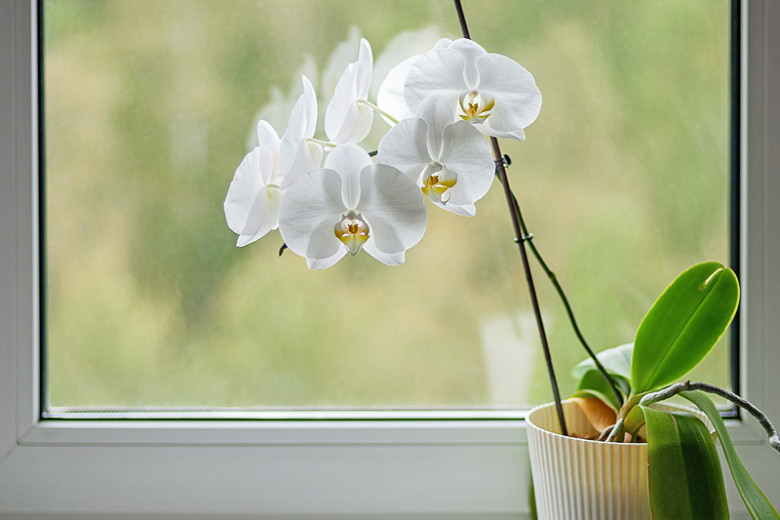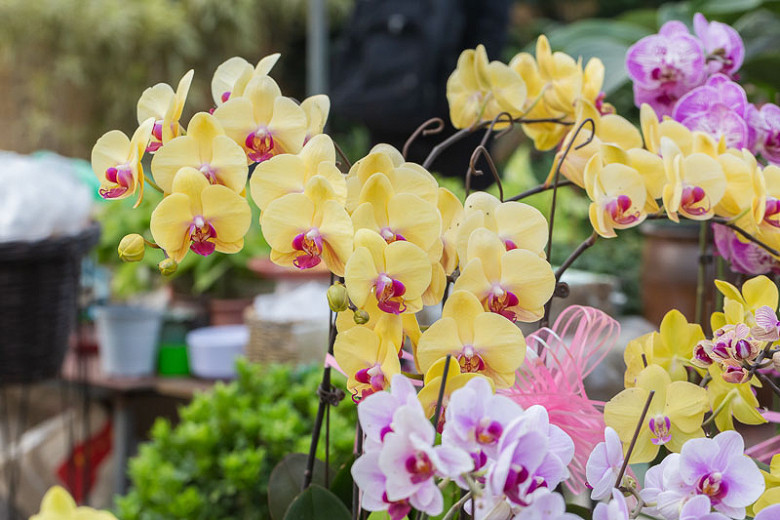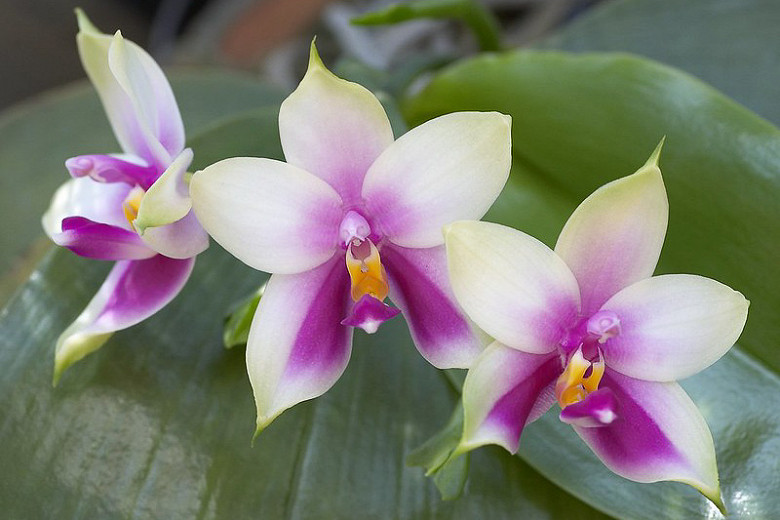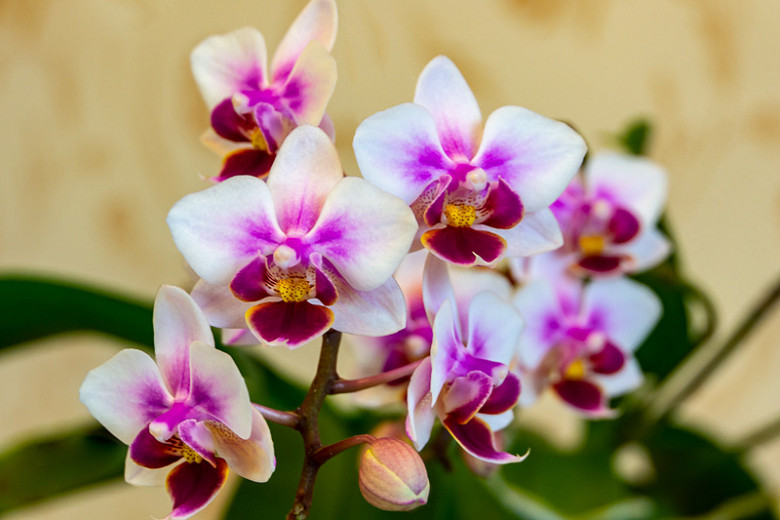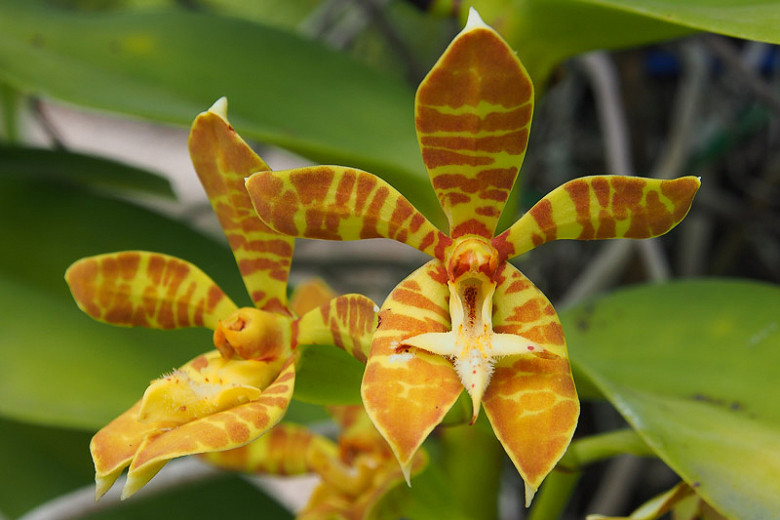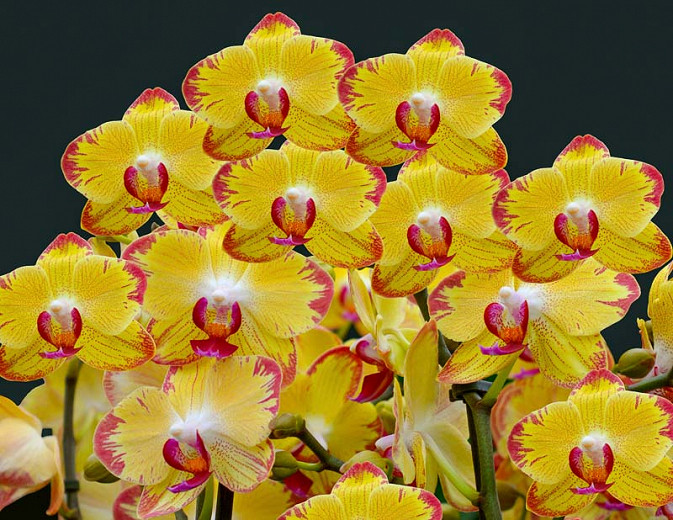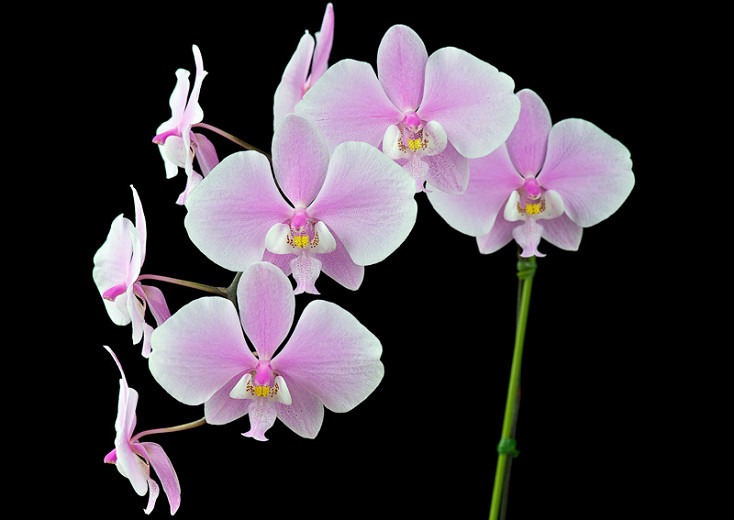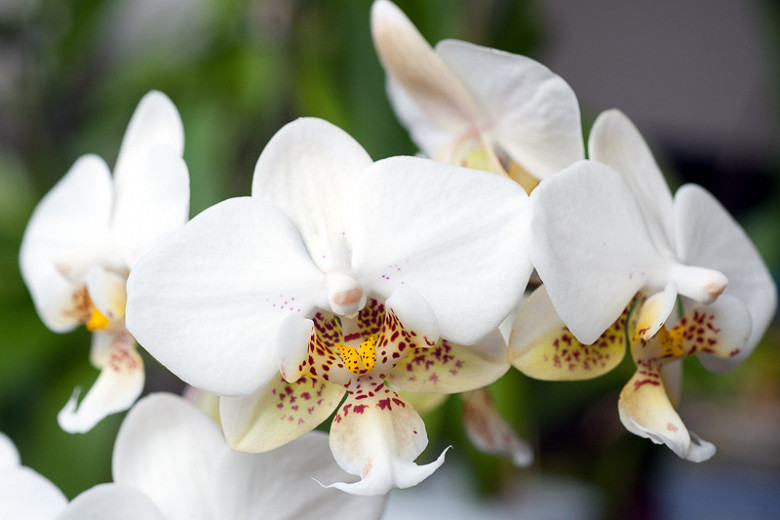Phalaenopsis amabilis (Moth Orchid)
Phalaenopsis amabilis (Moth Orchid) is an evergreen, epiphytic orchid boasting 20-30 fragrant, long-lasting white flowers, up to 4 in. across (10 cm), adorned with a white and yellow lip and red throat. Blooming often takes place over several months during the spring and early summer, and each flower lasts up to 3 weeks. They are borne in long sprays on arching stems rising to 40 in. (100 cm) above the foliage of 3-5 broadly oval, fleshy, shiny green leaves, up to 20 in. long (50 cm). Native to northern Australia, Indonesia, and the surrounding islands, Phalaenopsis amabilis can be found growing high on trees, or on branches of trees at elevations up to 1960 ft. (600 m). Resilient and easy to grow, Phalaenopsis amabilis is cultivated as an ornamental and has been used by breeders to produce many hybrids and cultivars. It is the national flower of Indonesia. An excellent choice for the home or greenhouse.
- Recipient of the prestigious Award of Garden Merit of the Royal Horticultural Society.
- Grows up to 24-40 in. tall (60-100 cm).
- Grow in an open bark-based compost and position with good indirect light. An east or west window would be ideal.
- Needs a minimum night temperature of 61-66°F (16-19°C) and a daytime temperature of 75-85°F (24-29°C).
- Night temperatures to 55°F (13°C) are desirable for several weeks in the fall to initiate flower spikes.
- Fluctuating temperatures can cause bud drop on plants with buds ready to open.
- Maintain high humidity (50-80%) for most of the year by setting the plant on a tray of gravel, partially filled with water, so that the pot never sits in the water.
- Water regularly throughout the growing season. Reduce watering slightly during the winter. Do not let the roots dry out completely. Avoid letting the plant sit in water. Mist the plant lightly in summer.
- Water only in the morning, so that the leaves dry by nightfall. This will prevent rot.
- Feed regularly in the growing season with a proprietary orchid fertilizer but reduce the frequency and/or strength of feeding in winter.
- Apply a high-nitrogen fertilizer twice a month if bark-based media is used. Otherwise, a balanced fertilizer is best. When flowering is desired, a high-phosphorus fertilizer can be applied to promote blooming.
- Propagate by division. Cuttings or offshoots may be rooted successfully when roots are 1 in. long (2.5 cm).
- Once the flowers have faded, cut the flowering stalk back to just above the second node (joint) visible beneath the spent flowers. A new flowering side shoot may develop.
- Phalaenopsis can be repotted at any time of year. The best time to repot is when new roots with green tips emerge at the base of the plant.
- To repot, remove all the old medium from the roots, snip off any diseased or dead roots, and spread the remaining roots over a handful of medium in the bottom of a new pot. Fill the rest of the pot with medium, working it among the roots, so that the junction of the roots and the stem is at the top of the medium. Gently ensure the compost is pressed down firmly around the perimeter of the pot. Drain the plant thoroughly and do not allow it to sit in water.
- Generally disease free. Keep an eye out for aphids, glasshouse red spider mites, and mealybugs.
- Native to northern Australia, Indonesia, Papua, New Guinea, the Philippines, and New Britain.
Tip for reblooming
- If a plant is large and healthy but does not produce flowers in a reasonable time, then reduce the temperature by 8°F (5°C) for four weeks, and a flower spike will usually develop.
Requirements
| Hardiness | 10 – 12 |
|---|---|
| Plant Type | Orchids |
| Plant Family | Phalaenopsis- Moth Orchids |
| Exposure | Partial Sun |
| Season of Interest | Spring (Early,Mid,Late)Summer (Early) |
| Height | 2' – 4' (60cm – 120cm) |
| Water Needs | Average |
| Maintenance | Average |
| Soil Type | Loam |
| Soil pH | Neutral |
| Soil Drainage | Well-Drained |
| Characteristics | Fragrant, Plant of Merit, Showy, Evergreen |
| Native Plants | Australia |
| Garden Uses | Patio and Containers |
